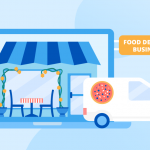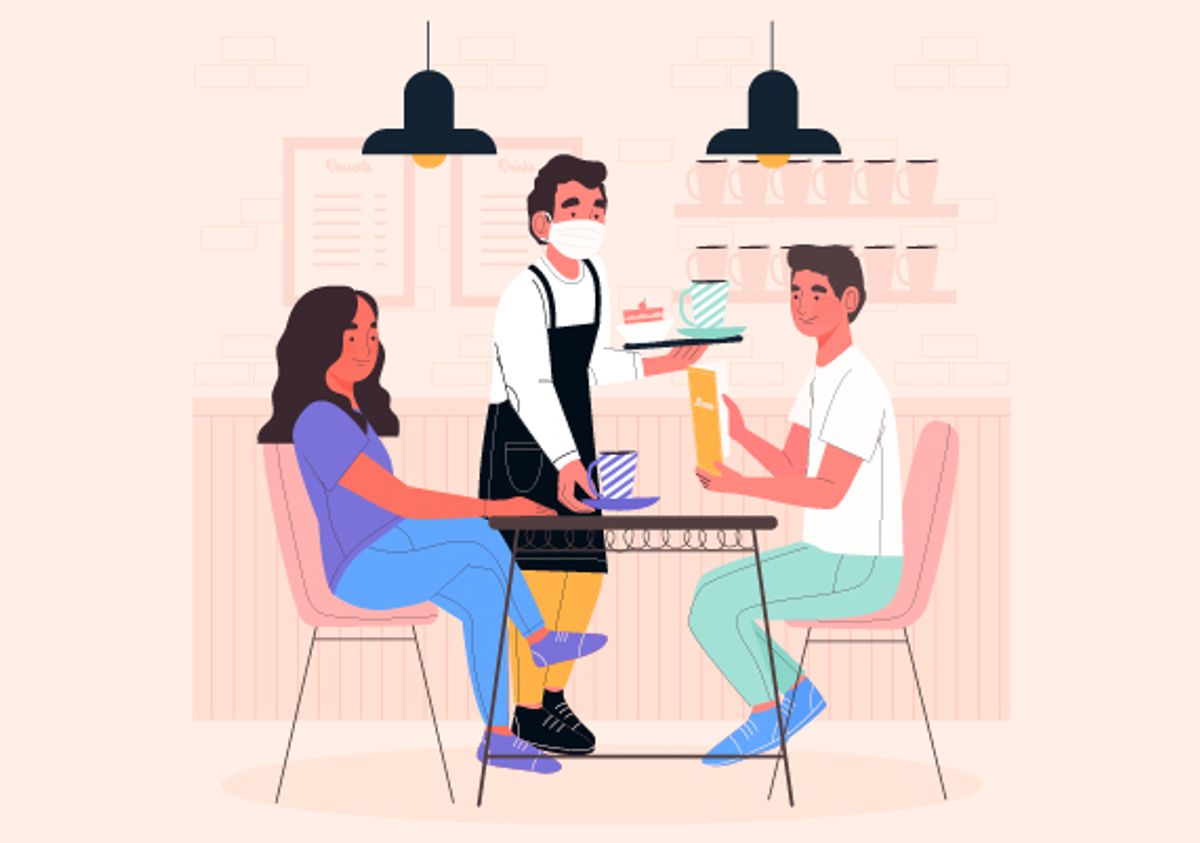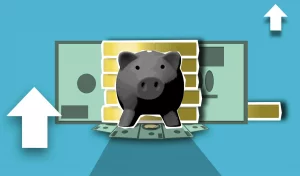Food Delivery Businesses hit a new high and just about doubled in 2020 following demands due to the Pandemic.
And while the world is on its way to mending from the effects of the Corona Virus, food delivery businesses are here to stay.
You see, the trend of food delivery dates back to before the pandemic and simply saw a surge in recent years. It is due to this demand that food delivery businesses are cropping up everywhere in all shapes and sizes.
If you want to get in the game and make the most out of this trend, here is how you can start your own food delivery business, and everything you need to know about setting up such a food delivery business.
Examples of Different Food Delivery Business Models

Thinking that there is a single format to a food delivery business is a highly mistaken assumption.
In fact, food delivery services and businesses come in many shapes and forms and can be categorized as separate models or groups.
Here are the three main models that you can consider if you are looking to start up your own business in food delivery.
The Full-Stack Model
The full-stack model includes those businesses that do everything in-house from building an app, hiring food delivery drivers, and even cooking the food being delivered.
The full-stack model includes what is known as cloud kitchens, as well as dark or virtual kitchens.
These kitchens are created as pure food preparation and delivery institutions and do not offer their customers the option to dine in at the facility.
To learn more about cloud kitchens and dark kitchens check out our blog posts on these topics and what these models have to offer.
This model is great as it offers the ability to earn more since you are in control of the entire value chain, however in order to see these earnings you need to be able to achieve a sufficient scale.
Moreover, you need a sizable investment to launch such a business in food delivery.
Delivery Service Aggregators or Platform to Consumer Model
Delivery service aggregators work as the connection between end consumers and a number of different restaurants.
Such delivery service aggregators acting as an intermediate are also in charge of providing customer support for problems and queries related to delivery and orders for these restaurants since they are responsible for the deliveries.
The platform-to-consumer model engulfs these delivery service aggregators and are third-party apps that provide customers with a list of available restaurants that are within their vicinity.
Restaurants partner with such businesses to seek help with the delivery process. Consumers can then order food from these restaurants which is delivered by either the restaurant itself or drivers of the platform.
You have probably heard of platforms such as Deliveroo and UberEats, these are some popular examples of such businesses that provide food delivery.
Such platforms usually take a certain percentage from the customer’s order value as well as potential delivery costs or fixed or variable fees.
The popularity of such businesses is evident by the fact that platform-to-consumer delivery is projected to have a market volume in 2021 of around $79,608m.
[INSERT_ELEMENTOR id=”2061″]
Restaurant to Consumer Model
This model includes those businesses or restaurants that started out simply serving food through their own locations and adapted to changing trends to start offering food deliveries.
These deliveries are managed via their websites, apps, or if they choose to join delivery platforms like those mentioned above.
Consider major fast-food chains such as McDonald’s which operate through their own application as well as being available to choose from on platforms such as DoorDash.
Therefore, it can be seen that food delivery businesses can be categorized as ranging from those that keep everything under their control and have a fully integrated model or those platforms that partner with restaurants and drivers to offer food deliveries.
How to Start a Food Delivery Service

So, the decision has been made, and starting up a business for food delivery is something you want to pursue. But how do you go about it?
Creating a successful business, no matter what industry it relates to is no easy feat and this is just the case for food delivery as well.
Here is a standard guide of some steps you can follow when taking the plunge to start your business.
Step 1: Research the Market
You cannot start any endeavor without a comprehensive starting strategy and in order to make one, you need to research your market.
After all, the food delivery market is expected to grow and reach $154.34 billion in 2023, and in order to effectively infiltrate this market, you need to know what you are up against and consider certain things.
First things first are the competitors in the market. We have touched upon this above and described the different business models dealing with food delivery.
Use these businesses that are already in the market to gain knowledge about pricing patterns, marketing strategies, and even menus that they offer.
While we speak of competitors you may also want to see which businesses you could possibly partner with. This is reliant on the type of business you want to start which is what we will discuss below.
If you choose to partner with third-party platforms you will want to gain knowledge about what such platforms offer. Keep in mind that partnering with such aggregators if you are running a restaurant has its drawbacks.
Finally, you will also want to identify and research what the market gaps are. This could include either a lack of a certain type of cuisine of food or perhaps a certain neighborhood or area has fewer such businesses catering to them.
Catering to these gaps will give you the upper hand.
Step 2: Decide What Type of Business You Want to Start
Once you have information about what is available in your market and the situation of other such businesses it will be easier to make an informed decision of what food delivery module is best for you to start.
Even with the modules, we defined above there are subcategories and styles you can adopt for your business.
For example, if you choose to start a business following the full-stack model you need to decide whether you will be making food in batches or to order.
This step is arguably the most important one throughout your startup process and will determine what your success will look like. That is precisely why you should take the time to first research the market so you can come to the best and most profitable decision.
Step 3: Food Delivery Target Market
Knowing where you want to establish your business for food delivery is important since you want to cater to the people in that area.
Therefore, you want to ensure that you take the time to define your target audience.
Will your target audience be college students who are on a budget, office-going professionals who are after a quick bite, or families looking for kid-friendly meal options?
Not only does knowing your target audience helps you and your business to adapt so you can meet their needs and be successful, but it also helps when establishing marketing strategies.
Step 4: Get Relevant Licenses and Registrations
Handling food requires particular licenses and there may be additional licenses necessary for you to start delivering food.
When starting a new business your local authority may also require you to register the business. Depending on where you live it’s relatively easier nowadays to register a company in Hong Kong, Los Angeles, Barcelona, etc.
You want to ensure that all the relevant registrations and licenses are done and up to date to establish that your business does not face any issues in the future.
Step 5: Build your Brand
Food delivery is predominantly a business that exists online. This is especially true since the COVID-19 pandemic hit, ensuring that dine-in options were closed or limited around the world.
Having a business that exists primarily online can be difficult. Therefore, it is important to establish and build a brand that can help customers associate with your business and allow your endeavor to be a success.
Take considerable time and effort in creating your brand. Even consider hiring relevant resources so you can create a logo, menu, and even a webpage that will be most effective.
Blink can help you create the perfect website for your brand and ensure that your customers know just who you are. We will discuss what Blink can offer you in detail below.
Step 6: Set up Channels to Receive Orders
Food delivery requires that you take orders from customers. You can do this through a variety of platforms and modes including phone calls, messages, websites, social media accounts, and mobile applications.
However, you should note that 55% of people according to studies prefer ordering food without having to interact with a person. Moreover, restaurants with an online ordering system are able to raise delivery profits by approximately 30% in comparison to those that don’t.
Therefore, when setting up a channel to receive orders you may want to consider implementing an online ordering system to make the most out of your food delivery business.
Step 7: Create and Implement a Marketing Strategy
Building a customer base will be difficult at first, however, you need to ensure that potential customers are aware of your business.
It is important to create a buzz, attract the right people, and convert potential customers into loyal customers for your business.
An effective marketing strategy plays a big role in this.
Take the time, and even seek help if need be, to create and then implement an effective marketing strategy that will ensure that people know about your brand.
Important Factors to Consider When Starting Your Food Delivery Business

While food delivery is on the rise, the competition of such businesses ensures that you need to stay vigilant and make certain that the performance of all the parties involved in your business is performing up to standard.
The process involved in food delivery is multi-layered. Consider the restaurants you are dealing or working with, drivers you employ to deliver your food, the operator of the platform you are using, and even the customers that are ordering food from you.
There are certain key performance indicators, also known as KPIs as well as essential metrics you should keep track of to evaluate the performance and involvement of the parties that are part of your business.
Let’s look at some of these metrics and KPIs in turn.
[INSERT_ELEMENTOR id=”2061″]
Restaurant and Drivers KPIs
When you consider the restaurant you are working with or if you are running a restaurant yourself as well as the drivers you employ there are certain considerations to track in relation to their performance.
First and foremost, you want to track what your average order duration is. This shows you how fast your business can complete a customer’s order once it is placed.
The aim or goal should be to minimize this time. The shorter the order duration the fresher the food is delivered to the customer and you ensure customer satisfaction.
Another performance indicator is seeing how efficiently your driver network operates. You can track how long or what percentage of drivers are fulfilling orders and how many are waiting for another order.
Not only can you judge which times of the day are most busy and therefore create marketing strategies tracking such performance allows you to determine how many drivers should be active at any given time.
For the best strategy, you want to establish the right number of drivers so that the majority are on order and there are fewer drivers waiting for orders.
Platform KPIs
There are certain indicators in regards to your platform that also show how your business is performing and its overall success.
The most important metric is knowing how many orders you are receiving. The number of orders indicates how your business of food delivery is growing.
You want the number of orders you receive to start growing over time as your business grows and your brand becomes known.
Another factor to consider is the average orders or deliveries you receive or provide over the span of an hour.
This indicates that your business has received sufficient density to be able to achieve positive contribution margins.
Another crucial factor is to know what your profit margins are on every delivery. After all, every business needs to turn a profit and food delivery is no exception.
This will allow you to make your process and business as efficient as possible by selecting routes and restaurants that are profitable rather than those that are less profitable.
Remember to consider expenses such as marketing, the cost of your operation, payroll, etc. Your expenses and potential profit will depend on how your corporation and operation are structured.
Customer Key Performance Indicators
The customers are what make or break your business, and this is true for businesses that deal with food delivery as well.
Therefore, it is important to keep track of how happy your customers are with your service, how much you can spend to acquire or maintain your customer base, as well as how much you can make from your customers.
One metrics is the rate at which you lose customers also known as the customer churn.
When you consider customers of food delivery services or businesses the customer churn fluctuates quite heavily.
In fact, studies show that approximately 86% of users stop using food delivery apps within the first two weeks of the launch.
Therefore, in order to retain customers, you want to ensure the following:
- The speed at which delivery of an order is received or small order durations as explained above.
- A high level of customer service and support
- An application that is user-friendly and seamless to use
- Quality of food
Moreover, you also want to measure how much value your customers gain from your product. Identifying and keeping track of this helps you decipher how likely your customers are to recommend your business or service to other people.
This is referred to as the net promoter score and is measured on a scale from 0 to 10, with 10 indicating a customer’s absolute likelihood to endorse your app and 0 indicating they would not recommend it.
There are three categories of net promoter scores. These are detractors that are customers who are given a score between 0 and 6, passives who are scored between 7 or 8, and promoters who get a score of 9 or 10.
The score is calculated by subtracting the percentage of customers that are detractors from those that are promoters.
By knowing this you are able to gauge how customer satisfaction evolves over time and thus your business can react to negative feedback and rectify problems as they are identified.
How Blink can Help with Your Food Delivery Business

Blink is offered as a Software-as-a-Service and provides an online ordering solution with both web interface as well as mobile applications.
The platform with a secure, scalable backend is connected to a white label, branded template offering your restaurant or business a website and mobile application.
When you consider creating your own food delivery business, Blink can help you streamline the process and provide you with the tools you need to launch your business endeavor. Since even though food may be your strong point, technology can be difficult to master.
Blink’s platforms offer a range of features from all the online ordering features your customers need, to a driver app and delivery tracking.
You also gain features that would otherwise not be available if you were to partner with aggregators such as data and analytics of your users.
For more details about the features offered by Blink check out the website here. You can also book a demo with one of the restaurant consultants to see how Blink can help your business endeavor.
How to start a restaurant delivery service?
Starting your own food delivery business can be a great way to make money, but knowing where to start can also be challenging. Here we are mentioning a few pieces of advice to understand how to get your business off the ground!
If you’re thinking about starting your restaurant delivery service, here are a few things to keep in mind:
- Figure out what type of food delivery service you want to start. Do you want to deliver meals from local restaurants? Or, do you want to start your meal prep service?
- Once you’ve decided on the type of food delivery service you want to start, research the competition in your area. What are they doing well? What could they be doing better?
- Create a business plan that outlines your goals, target market, and marketing strategy. It will help you stay on track as you start your business.
- Find a good location for your business. Starting a restaurant delivery service, you’ll need to be close to restaurants. Starting your meal prep service, you’ll need a kitchen that meets all the necessary health and safety requirements.
- Finally, start promoting your food delivery business! Use social media, word-of-mouth marketing, and traditional advertising to get the word about your new business.
Starting a food delivery business can be a great way to earn extra income or even start a new career. With a bit of research and planning, you can be on your way to success! Good luck!
How can Blink help with starting a restaurant delivery service?
Blink can provide you with a list of restaurants in your area looking for delivery services. They can also help you find a good location for your business and start promoting your food delivery business.
Start visiting Blink’s website to create an account for restaurant delivery. After you log in, you will see a map of all the restaurants in your area looking for delivery services. Choose the ones you want to deliver for and start earning money!
For meal prep delivery, start by creating a menu of healthy and delicious meals you can prepare and deliver to your customers. Use Blink’s website to promote your business and start getting orders from customers in your area. Blink is here to help you every step of the way to create your own food delivery business. As the first and only door-to-door food delivery service in Singapore, Blink is excited to offer its services to help one begin their own food delivery business! Their services are available 24/seven and have a wide range of restaurants you can deliver for. They also provide promotional and marketing materials to help you get started.
Their experience in the food delivery industry makes them confident in helping you start your own food delivery business. Blink is the perfect partner to create one’s own food delivery business!
Related Articles:
 Tips to Get the Most from Your Restaurant’s Online Ordering Software
Tips to Get the Most from Your Restaurant’s Online Ordering Software
 Everything You Need to Know About Starting an Online Food Delivery Business
Everything You Need to Know About Starting an Online Food Delivery Business
 How restaurants should manage aggregators in 2023
How restaurants should manage aggregators in 2023
 Front Line Heroes: How Our Food Delivery Riders Help Grow the Restaurant Industry
Front Line Heroes: How Our Food Delivery Riders Help Grow the Restaurant Industry
 The 7 Best Gloriafood Alternatives for Restaurant Businesses
The 7 Best Gloriafood Alternatives for Restaurant Businesses




